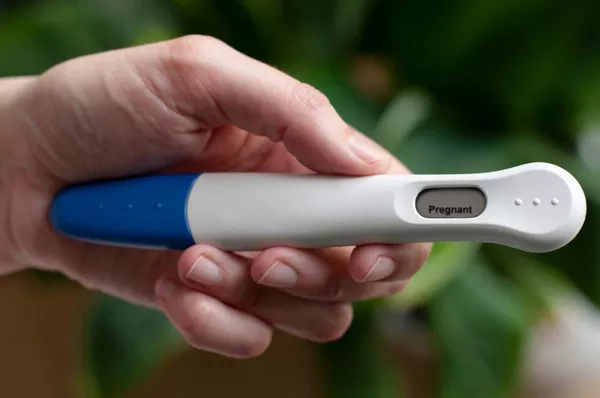Taking a pregnancy test can be an emotional and life-changing moment. To avoid confusion and get a clear answer, it’s important to understand how to read the results properly. This article provides step-by-step guidance on reading pregnancy test results, what to expect, and what to do next.
Understanding Pregnancy Tests
How They Work
Pregnancy tests detect the hormone human chorionic gonadotropin (hCG) in urine. Your body begins producing this hormone after a fertilized egg implants in your uterus.
Most home pregnancy tests use test strips coated with chemicals that react with hCG. If hCG is present in your urine, the test will show a visible signal, such as a line, symbol, or color change.
Types of Home Pregnancy Tests
There are several kinds of home pregnancy tests. Each one has a slightly different way of displaying the result:
Line tests: One or two lines show on the stick.
Plus or minus tests: A plus sign (+) means pregnant; a minus sign (−) means not pregnant.
Digital tests: The screen shows the words “Pregnant” or “Not Pregnant.”
Each test type comes with its own instructions, so always read the leaflet included in the package before testing.
Taking the Test Properly
Best Time to Take the Test
For the most accurate result:
- Wait until the first day of your missed period
- Use first-morning urine when hCG is most concentrated
Testing too early may lead to a faint line or false negative.
Step-by-Step Testing
Read the instructions carefully before starting.
Collect urine using the test method (either by holding the stick in the urine stream or dipping it in a cup).
Lay the test flat and wait for the amount of time specified—usually 1 to 5 minutes.
Read the result within the recommended time frame (typically within 10 minutes).
Reading Line-Based Test Results
Control Line vs. Test Line
Most strip tests have two lines:
Control line: Appears to show the test is working
Test line: Appears if hCG is detected
One Line: Not Pregnant
If only the control line appears, and the test line does not, it means you are not pregnant.
Two Lines: Pregnant
If both the control and test lines appear, even if one is faint, it typically means you are pregnant.
No Lines or Only Test Line: Invalid
If the control line does not appear, the test is invalid. Take another test and follow the instructions more carefully.
Reading Plus or Minus Test Results
Plus Sign: Pregnant
If the test shows a plus sign (+) in the result window, it means you are pregnant.
Minus Sign: Not Pregnant
A minus sign (−) means you are not pregnant.
Faint Plus Sign
A faint plus sign may still indicate a positive result. Retest in a few days or contact your healthcare provider for confirmation.
Reading Digital Pregnancy Tests
Clear Words on Screen
Digital tests usually display one of the following:
- Pregnant
- Not Pregnant
These tests are simple to read and do not require line interpretation. They also tend to be more expensive than other types.
What Does a Faint Line Mean?
Faint Line Still Counts
If a faint second line appears, the result is usually positive. The presence of any visible line in the test area generally indicates hCG has been detected.
Reasons for a Faint Line
- Early pregnancy (hCG levels still low)
- Diluted urine (less concentrated hormone)
- Testing too early
If you see a faint line, wait 2–3 days and take another test. The line should become darker as hCG levels increase.
Avoiding Common Mistakes
Don’t Read Results Too Early or Too Late
- Reading too early may show an incomplete result.
- Reading after the recommended time may show evaporation lines, which can be misleading.
Don’t Ignore the Instructions
Different brands have different guidelines. Follow the exact directions in your test’s instruction leaflet.
Don’t Use an Expired Test
Expired tests can give false results. Always check the expiration date before using the test.
What If the Test Is Negative but You Still Think You’re Pregnant?
Possible Reasons for a False Negative
- Testing too soon
- Urine was too diluted
- Test was not done properly
If your period doesn’t start in a few days, take another test or contact your doctor for a blood test.
When to See a Doctor
Confirming Your Pregnancy
If your test is positive (even faintly), schedule an appointment with your healthcare provider. They can confirm the pregnancy with a blood test or ultrasound.
If Symptoms Persist
If you have pregnancy symptoms (like nausea, fatigue, or sore breasts) but repeated tests are negative, a doctor can check for other causes or confirm pregnancy.
Conclusion
Reading a pregnancy test correctly is important for getting an accurate result. Most home pregnancy tests are easy to use, but they require careful attention to timing and instructions.
To read your result:
- Look for both the control line and test line
- A faint line still means pregnant
- No control line means the test is invalid
- Use first-morning urine for best accuracy
- Wait a few days and retest if unsure
If you’re still uncertain, reach out to your doctor for help. Whether the result is positive or negative, understanding what it means gives you peace of mind and helps you take the next right step.
You Might Be Interested In:
- Male Birth Control Pill Moves Closer to Reality with Promising Phase III Trial Results
- Telemedicine Expands Access to Birth Control Pills in Rural and Underserved Areas
- New Study Reveals Lower Estrogen Pill Reduces Side Effects Without Compromising Efficacy

